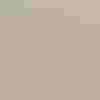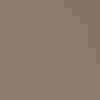
114th CBC Northern Canada Regional Summary
An impressive 20 counts were conducted in Northern Canada this year, with 13 in the Yukon, four in Northwest Territories, and three in Nunavut. Participants went out in search of birds at temperatures as low as -38°C, often by snowshoe or cross-country skis. Thanks to the Yukon Bird Club and Ecology North for supporting and sponsoring the Christmas Bird Counts. There are still a few communities across the North lacking counts, and efforts will continue to fill gaps for next year.
The species total for all Northern Canada counts was 41 (Yukon 38, Northwest Territories 21, Nunavut 3) with the highest species total (25) being recorded by Whitehorse. Also noteworthy were Tagish and Haines Junction with 20 species each. Northwest Territories’ highest species count was Fort Simpson with 18; while in Nunavut, Arctic Bay (Canada’s northernmost count) and Arviat recorded two species each, one better than Rankin Inlet which logged just one species (Common Raven).
Many are surprised to learn that waterfowl winter in the far north. This year, four Yukon counts recorded five species of ducks with all five being represented on the Whitehorse count. Highlights were 18 Common Goldeneye and 14 Common Mergansers at Tagish; and two Barrow’s Goldeneye, three Harlequin Ducks (new to the count), and 46 Mallards at Whitehorse. Unfortunately, the regular wintering flock of Trumpeter Swans was not found on count day at Johnson’s Crossing. Likewise, Rankin Inlet has had Common Eider in the past, though none were recorded this year.
Ruffed and Spruce grouse were well represented in the Yukon and NWT; with high counts being nine Ruffed Grouse at Mayo, and six Spruce Grouse at Haines Junction. The only Sharp-tailed Grouse was a single at Fort Simpson. Willow Ptarmigan were relatively low this year, especially at Yellowknife where only 16 were counted as compared to 148 last year; the highest Yukon count was 33 at Tagish. The only Rock and White-tailed ptarmigan were five at Arviat, and two at Haines Junction, respectively.
In Whitehorse, Bald Eagles benefit from the close proximity of a fish farm and the dump, as well as a long open stretch of the Yukon River; this year 13 adults were counted, while singles were at Marsh Lake and Tagish. The only Eurasian Collared-Dove was one at Watson Lake, a new species for that count, though it has been recorded on other Yukon counts in the past. The Whitehorse CBC has monitored the rise and fall of the Yukon’s only Rock Pigeon population over many years; this year the entire population, numbering just nine, was recorded. Northern Hawk Owl proved to be scarce this winter with two at Kluane National Park, and one at Johnson’s Crossing.
Yellowknife took honours as the North American Common Raven capital with a count of 2056; while Whitehorse was a close second with 1823. Despite a near total lack of daylight, 122 ravens were counted at Arctic Bay. Higher than normal winter numbers of Mountain Chickadees in the Yukon Southern Lakes Region produced counts of 22 at Tagish, 11 at Carcross, five at Whitehorse, and one at Takhini-Lake Laberge. Bohemian Waxwing is irregular in winter; an abundance of mountain-ash can be credited for the high count of 1377 at Whitehorse; while other counts reported 32 at Hay River, 23 at Fort Smith, 12 at Carcross, and one at Mayo. Snow Bunting is scarce in the Region in winter; this year produced three at Tagish, two at Haines Junction, two at Kluane National Park, and two at Teslin. The only rare winter sparrow reported was a lone White-crowned at Carcross. Pine Grosbeak was recorded on most Yukon counts with some of the higher counts being 205 at Haines Junction, 165 at Carcross, and 131 at Watson Lake. Relatively low numbers of Pine Grosbeaks were recorded in NWT with 37 at Fort Smith, 34 at Fort Simpson, and five at Hay River. Redpoll identification is as much of a challenge in the North as anywhere; this year, Yellowknife recorded five Commons, 50 Hoaries, and 129 redpoll sp., while Fort Simpson tallied 38 Commons, 72 Hoaries, and 52 redpoll sp. The Region’s highest redpoll counts were at Tagish with 419 Commons and four Hoaries. Fort Smith was the only count reporting Evening Grosbeak this year with 78.
Get Audubon in Your Inbox
Let us send you the latest in bird and conservation news.




